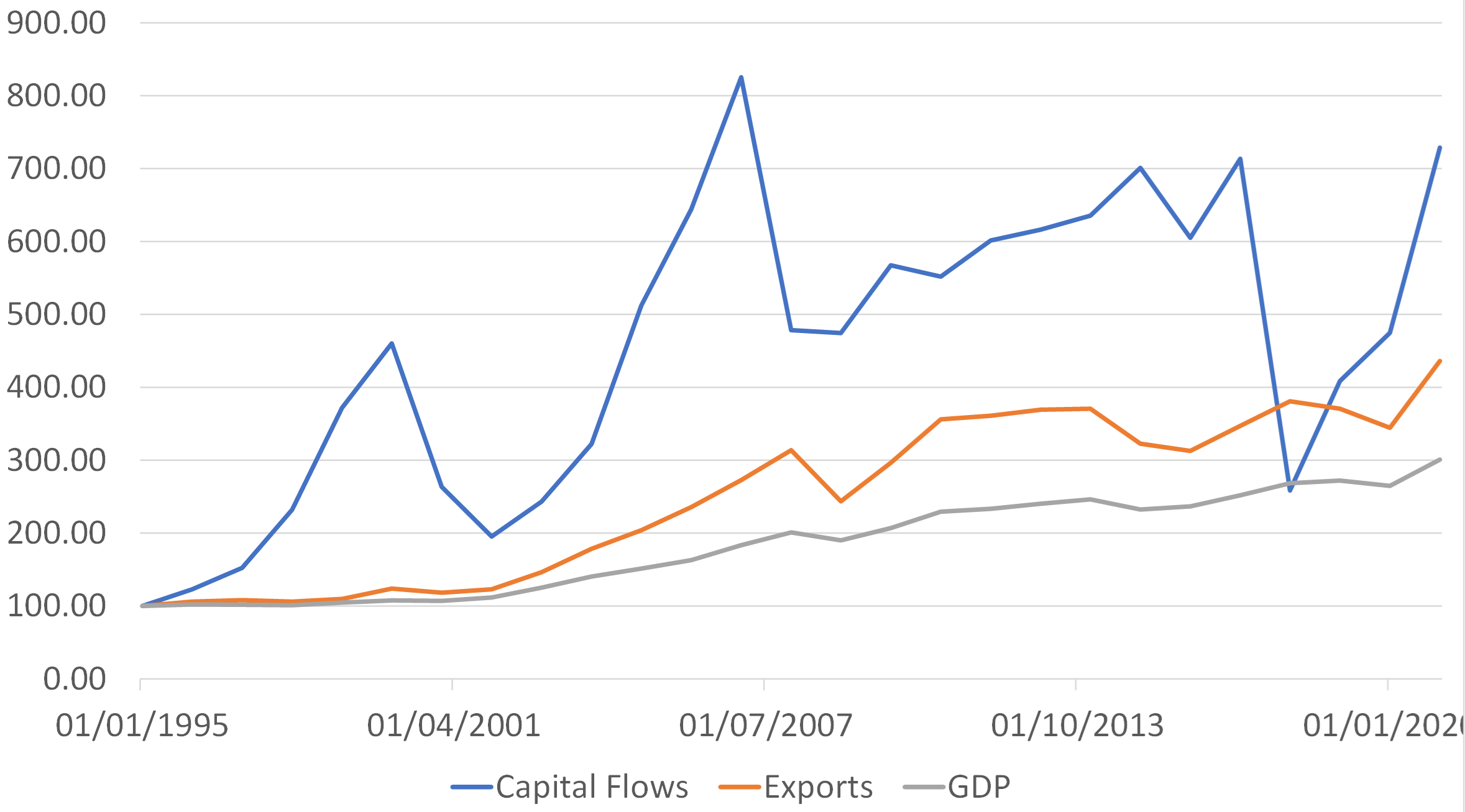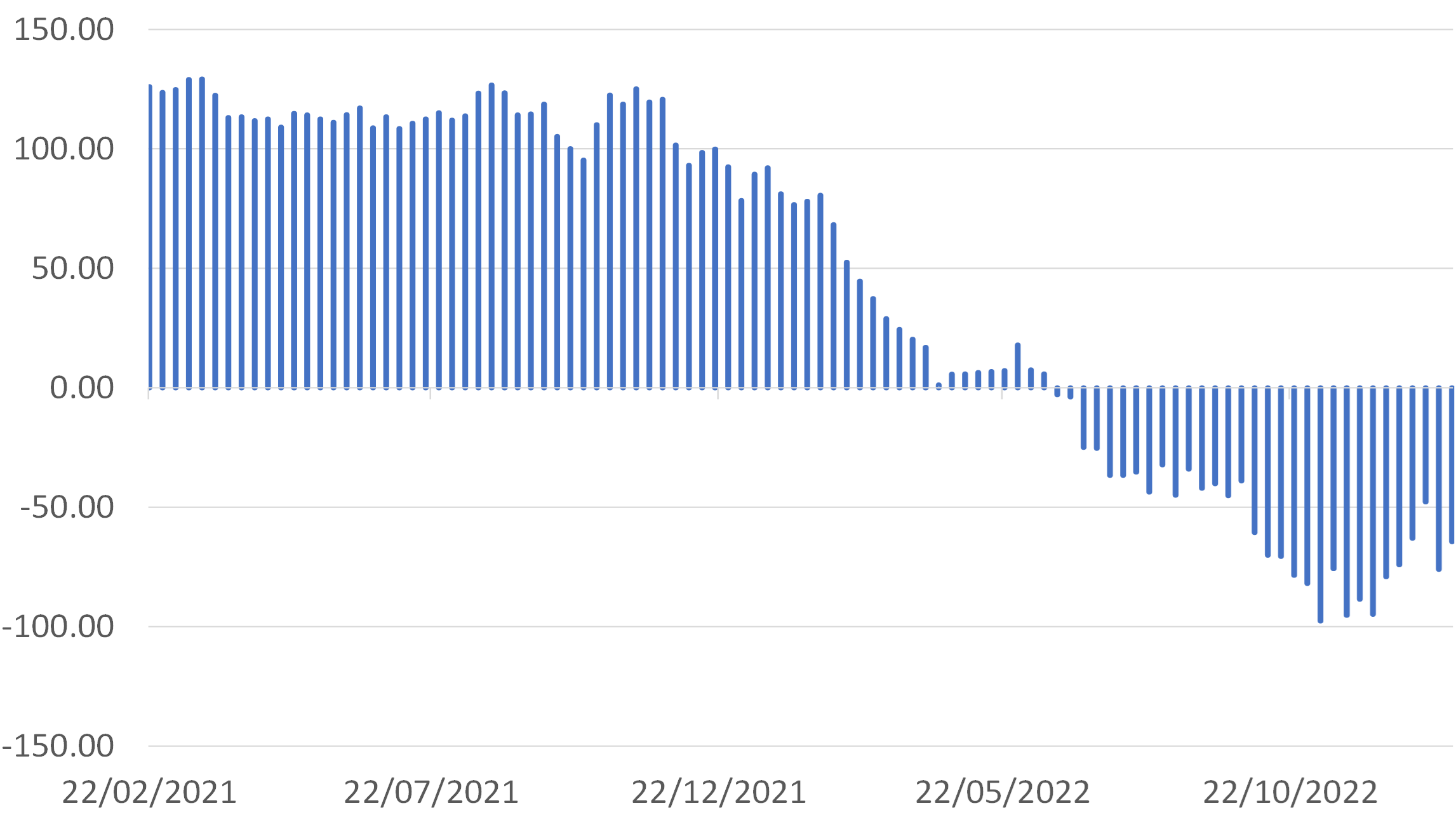A regular debate between the older and younger members of the Hunt-household revolves around whether old suspenseful Black-and-White horrors are actually more scary than vivid technicolour gore modern films. We suspect that for the Federal Reserve, what you can’t see in black and white may be the scarier concept…
Longer term readers of ours will no doubt be aware that a key component of our EM coverage over the last six or seven years has been centred on and around the build-up of USD liabilities in many – particularly Asian - economies. Of course, China has been at the centre of this process, and as part of this analysis we came to conclude that China’s banks had around $3 trillion or so in what were essentially unrecorded short term USD liabilities within their balance sheets. A number of other authors have also been looking into this topic, most notably Reinhart via the NBER, Wigram Capital, and somewhat belatedly the BIS. Indeed, the latter has finally released the findings of its own three-to-four-year study and concluded that there may be circa $23 trillion of under recorded / unreported (mainly short term) FX liabilities within the global system. It seems that although we might have had one of the more “aggressive” views on this issue in the market, the BIS has now leapfrogged us…
In a similar vein, this week we attempted to reconcile the short term credit flows / repo-like components of the US flow of funds data and, quite simply, we discovered that there were also large “holes” in the counterparty data. At other times, we have also had a hard job making consistent sense of French, Japanese and several other countries’ flow of funds & balance of payments data. Our efforts have however yielded two conclusions, namely that the immense growth in global capital flows relative to the size of the global economy over the last two decades has at its base the seemingly “vanilla” short term collateralized markets, and that many of these credit flows often end up being recorded not in the international credit data, but rather in Direct Investment data. The latter seems to occur when either subsidiaries borrow on behalf of their parents (common vis-à-vis the PRC banking issue noted above), or when private equity or private credit structures are used as intermediaries. For example, a private equity firm that levers itself in order to acquire a company may find its flows counted as FDI, even though at the heart of the transaction is credit. These measurement issues may seem arcane in nature, but the understanding of them has become vital to policymakers.
Global: Nominal Capital Flows, Trade & GDP 1995 - 100

We describe these processes because they imply that there is an immense under-recognized credit system that has provided the foundation of what we now consider to be the “normal state of affairs” but which the central banks probably even now only have a very limited and partial knowledge of – in fact we might even suggest that they have until recently only been made aware of its existence when there have been problems in the short term funding markets – 2008, December 2018, September 2019, and March 2020 being obvious examples.
These problems generally arose when volumes in the funding markets dried up, either because of counterparty fears during 2008; the combination of tax changes, QT, and notably heavy Treasury bond issuance in 2018; or simple “congestion” in the rollover calendar. Interestingly, rising short term rates per se have rarely been a problem – they certainly weren’t in 2004-2007 when the Fed raised rates 16 times to seemingly little effect.
As it stands, 2023 is shaping up to have both very heavy debt issuance by governments and QT. The Euro Zone will issue record amounts of debt this year outside of the ECB, while US T bond supply to non-bank investors could potentially top $3 trillion this year if QT does go ahead as planned.
It seems to us that, particularly since the calamity that befell the UK’s Truss Administration (*rising bond yields were only part of the problem – the decline in the value of the borrowers’ collateral was also a major factor in the crisis) and equally importantly since the BIS finally reported its findings, that US policymakers may be running scared of compromising this huge “under the radar” credit system that has become so vital to the everyday functioning of the US – and indeed Global – financial system.
Hedge Funds, insurers, banks, multi-strategy funds and the private markets all make extensive use of repo-like sources of credit, or the deposit facilities that they provide. In 2009, the Bank of England noted that the “Depo was Dead, the Repo is Now Everything”. The system simply cannot function with these markets and few policymakers would want to see a crash or market calamity, no matter how hawkish they might be when it comes to controlling inflation.
That this fear exists is not merely a suspicion of ours. At his recent Brookings Institute speech, Powell sneaked in an important line about protecting the settlement system. Ms Logan at the Dallas Fed has first-hand experience of what happens when these markets misbehave (she previously ran the markets desk at the NY Fed), while other Fed Presidents have warned about the potentially unpredictable consequences of QT (and we presume that they mean on the short-term credit markets). It is perhaps therefore not surprising that the FRB went so far as to suspend QT late last year when these short-term credit markets face both seasonal rollover and regulatory pressures. Interestingly, the Fed also seems to have been a little “quiet” on the QE front over recent days.
USA Federal Reserve Purchases of Bonds
USD billion over 5 weeks

We have little or no doubt that Mr Powell and his colleagues genuinely wish to close the US economy’s still positive output gap and thereby resolve the economy’s ongoing underlying inflation problem. We suspect that they believe that even a modest recession would be a price worth paying for such a disinflationary outcome. Speeches over recent days have confirmed this desire. However, we also suspect that they would view a GFC II as being too high a price to pay, and the BIS and others’ work has probably now revealed to them just how easily a GFC-like breakdown in these fundamentally important credit markets might occur. The calculus of policymaking has now become an awful lot harder.
To be fair, we would not want Mr Powell’s job next week (assuming – and hoping - that he is fit enough to return to work). If he retains his anti-inflation bias and indeed responds to the obvious easing for financial conditions that has occurred since last Thanksgiving by signalling a more hawkish stance, then the USD would likely soar, bond prices would fall, and the system might easily become “stressed”. Signalling more rate hikes or QT in front a wall of public debt issuance that must occur this year once the Debt Ceiling is resolved would be an aggressive and perhaps even dangerous move. This of course is what the ECB has been signalling of late, with some impact on the EUR; but a stronger USD is always a much more significant event in the USD-dominated global credit system.
Alternatively, Chair Powell could fall back on the better headline inflation data of late (even though in December he said that he would not…) and simply decide not to risk stressing the system because the inflationary threat is deemed to be receding. Interestingly, the media seems to be becoming less focussed on the “cost of living” then it was and more aware of people like Rogoff’s warnings over financial fragility.
Of course, if the Fed does suspend its war on inflation – just as the central banks did in 1976-77 - then there is a very high probability that inflation will merely come roaring back in 2024/5 as a new risk on phase in markets encourages workers to ask for higher wages and companies to raise their prices. To abandon the fight against inflation now would mean a bigger fight later, but policymakers have become used to kicking cans…
For markets, we are left with the feeling that as in 1988 and again in 1994, what the Fed says in February (on this occasion, the first day of the month) will likely set the tone for the coming months or even quarters. A dove-ish Fed will likely create a further rally in asset prices and perhaps further weakness in the USD (we suspect that a dove-ish Fed is already the markets’ expectation), but a hawkish Fed and an unexpected tightening in liquidity conditions could cause a USD rally and weaker markets in the short term. Of course, over the longer term, if the Fed allows conditions to ease, as it did in the mid-1970s, we will also know that the real fight against inflation will be a year or two hence…
Disclaimer: The information in this report has been taken from sources believed to be reliable but the author does not warrant its accuracy or completeness. Any opinions expressed herein reflect the author’s judgment at this date and are subject to change. This document is for private circulation and for general information only. It is not intended as an offer or solicitation with respect to the purchase or sale of any security or as personalised investment advice and is prepared without regard to individual financial circumstances and objectives of those who receive it. The author does not assume any liability for any loss which may result from the reliance by any person or persons upon any such information or opinions. These views are given without responsibility on the part of the author. This communication is being made and distributed in the United Kingdom and elsewhere only to persons having professional experience in matters relating to investments, being investment professionals within the meaning of Article 19(5) of the Financial Services and Markets Act 2000 (Financial Promotion) Order 2005. Any investment or investment activity to which this communication relates is available only to and will be engaged in only with such persons. Persons who receive this communication (other than investment professionals referred to above) should not rely upon or act upon this communication. No part of this report may be reproduced or circulated without the prior written permission of the issuing company.



